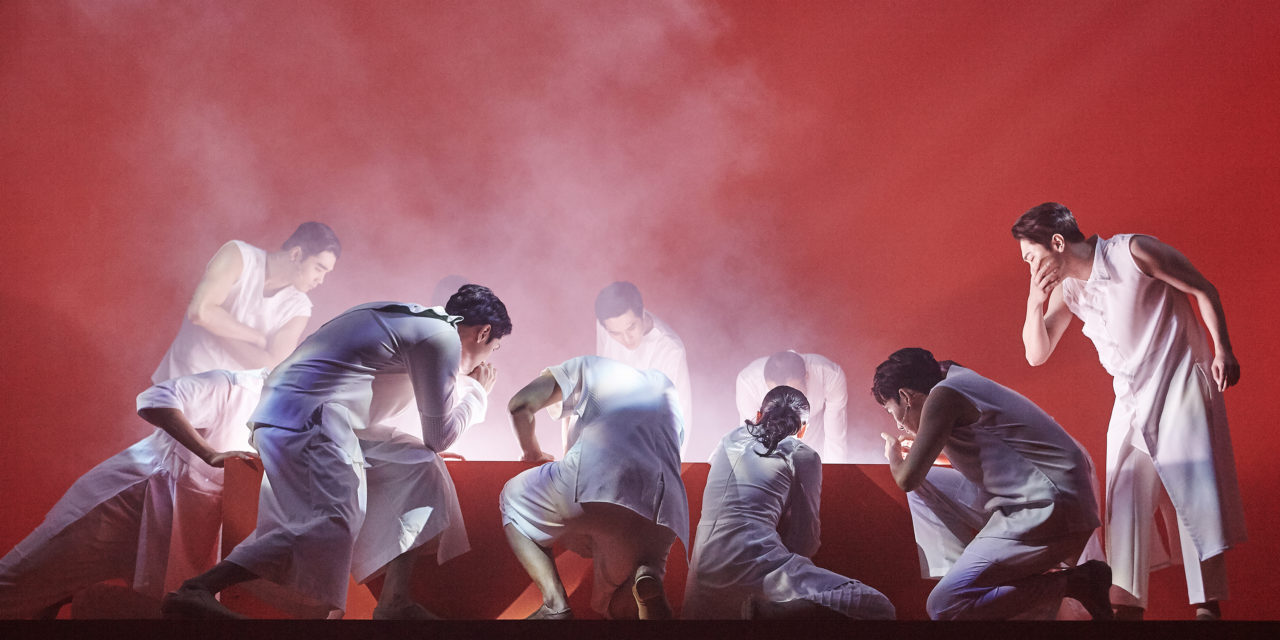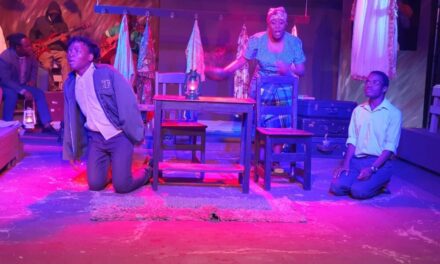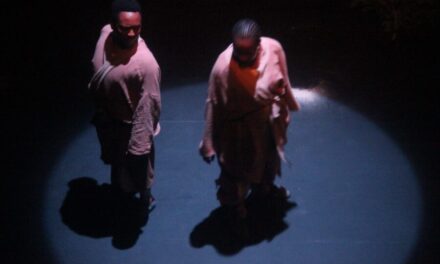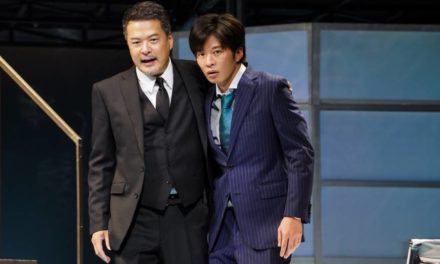Theatre adaptations of novels are on the rise this season. Of course, this is nothing new. Fiction, both classic and modern, have always made up a good chunk of the performing arts repertoire. It would be more precise to say that some of the most successful and discussed productions this season are adaptations of novels.
Why are novel adaptations generating such buzz right now? One reason might be because theatre artists have changed their approach to adapting fiction. Previously, adapters were too concerned with preserving the so-called “fragrance,” “beauty,” or “perfection” of the original novel’s language and structure. In other words, theatre adaptations were too “literary.” Recent productions, on the other hand, approach works of literature as the starting point, motif, or inspiration for performance texts, recognizing that it is impossible to preserve a novel’s textual characteristics onstage. Instead, recent adaptations try to reconstruct the novel using the language of theatre. Ultimately, the best way to be truthful to a novel’s literary stature is to betray it—a dialogue between fiction and performance that accepts difference, one might say. Public interest in Goodbye, Mr. Yi Sang fits this trend.
Going off of the press and public’s reactions, Goodbye, Mr. Yi Sang seems to have succeeded as a “bold attempt” and “new experiment,” phrases that appeared frequently in news coverage of the production. The Seoul Performing Arts Company (SPAC) marketing team’s strategy played a key role, promoting the piece as immersive theatre that “radically breaks down the barrier between the audience and the stage.” Also notably, the production “departed completely from the original novel’s plot structure.” Compared to SPAC’s previous work, Goodbye, Mr. Yi Sang is indeed a bold attempt. But what about its promised interaction with spectators? Did the production really break down the barrier between the audience and the stage?
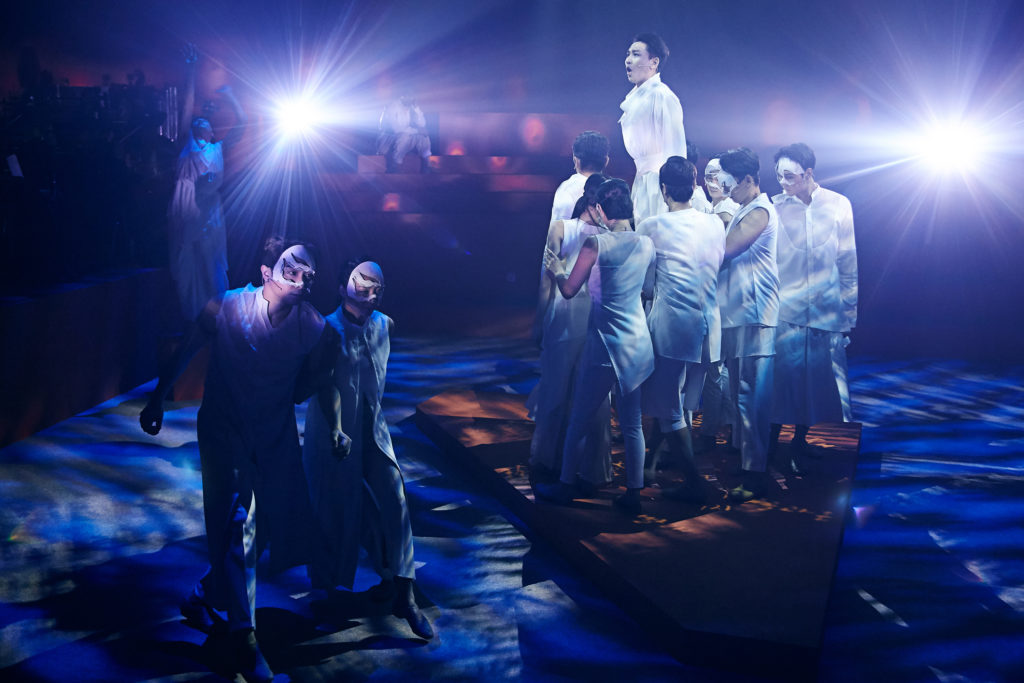
Immersive Theatre and Breaking Down Barriers
Elaborating on the immersive theatre label, some news outlets explained that “your experience of the performance can change depending on where you are, and all of the characters spread throughout the space can be the main character” (Seo Eun-young, Seoul Economic Daily, October 18, 2017). But were there really different experiences? Could any character rise to protagonist status? Did audience members have the agency to sit wherever they wanted and did that choice create different perspectives and narratives? Could characters other than the titular poet Yi Sang communicate aspects of their lives and themes important to them, including those in the pre-show lobby performance? Or was it actually the case that these figures existed only as tools to tell Yi Sang’s story?
The fourth wall can only break down if the audience enters and intervenes in the event happening before them, fulfilling an active role. This doesn’t mean that they must physically affect the performance; forcing physical contact without the audience’s psychological consent can often render spectators more passive and removed. It is important to reach an agreement with the audience, and encourage active participation, especially emotional and intellectual participation, based on that agreement. The barrier doesn’t fall just because actors bump shoulders with audience members or emote intensely from within arm’s reach. It doesn’t fall just because a production hands out food to spectators or asks them to read aloud from a text. It doesn’t fall just because spectators sit on stage and actors perform in the house. These devices do not guarantee audience participation.
Immersive theatre, the term that SPAC and the press emphasized, became a hot trend in contemporary performing arts after Punchdrunk’s Sleep No More. Starting in England, this production has had successful iterations in New York and, recently, Shanghai. After checking your belongings and wearing a wristband that serves as your ticket, you enter a completely new dimension, created by renovating every square inch of a six-floor building. This is a role-playing game and an encounter with the fantastical in one, an upgraded theme park. Sleep No More offers the experience of physically walking into an utterly imagined world, a world that had only existed in movie screens or the pages of a novel. No wonder it has become a hit tourist attraction in New York and Shanghai.
By this measure, Goodbye Mr. Yi Sang fails to qualify as immersive theatre. This is unfortunate as Kim Yeonsu’s original mystery novel has great potential to activate the audience. Spanning three stories—“Death Mask,” “The Lost Flower,” and “Bird”—that take place in different times and places with different characters, the novel blurs the distinction between truth and falsity. Things that the reader accepts as fact in one part are contradicted or muddled in another. In the characters’ pursuits after the truth, or what they unyieldingly believe to be the truth, different perspectives and narratives clash over the same pieces of information. One could imagine an immersive theatre adaptation in which audience members trail different characters, collecting clues and proactively forming their own narratives, choosing which explanations, themes, and questions to support. They would eagerly discuss these stories with one another, arguing for their versions of the truth. But SPAC did not take this approach. The production left me wondering when exactly the idea of “immersive theatre” entered the production process, and whether it is necessary to describe the project.
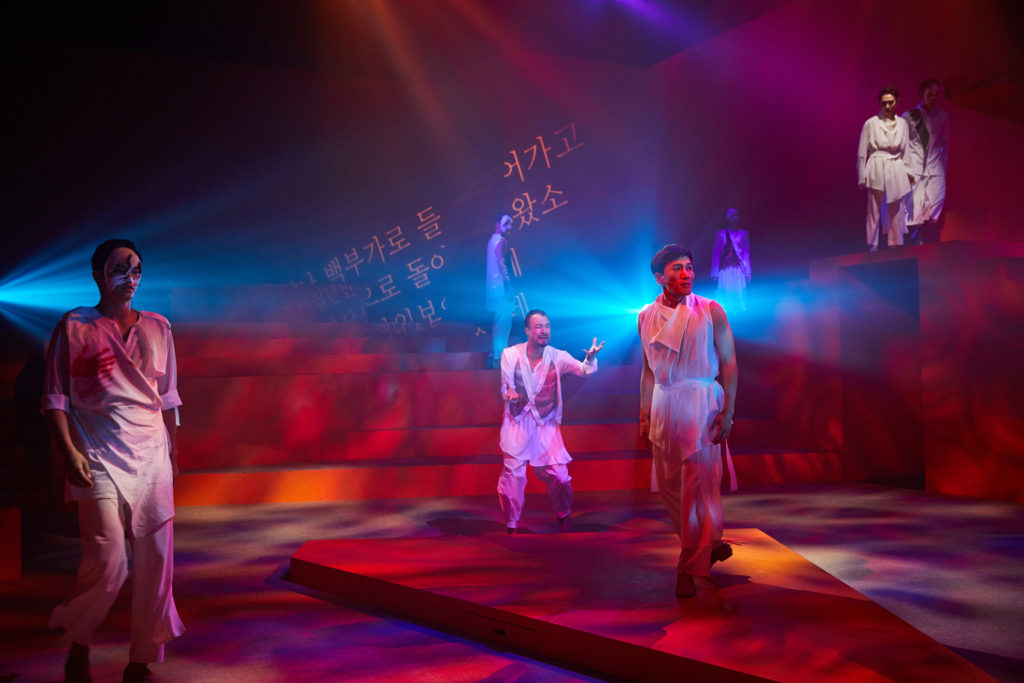
Goodbye, Mr. Yi Sang. Photo: Seoul Performing Arts Company.
On Audience Participation
After checking your belongings in the lobby, you receive a mask and a white envelope—perhaps a symbolic obituary or offering envelope. [Translator’s note: In Korean custom, visitors to a funeral offer money, usually in a white envelope, to the bereaved as a token of consolation.] The envelopes bear the names of Yi Sang’s friends: Ok-hee, Choi Seung-hee, Byun Dong-rim, Gil Jin-sup, Cho Woo-sik, and others. You become a visitor at Yi Sang’s funeral. You also wear the white mask before entering the theatre. However, this cumbersome setting dissipates as soon as the performance begins. It is unclear, both on a thematic and functional level, why we are visitors at Yi Sang’s funeral or why we stand in for some of the poet’s friends, just as the masks are never explained. Frankly, these objects were nothing more than empty gestures at audience participation.
Harping on immersion and participation is beside the point. A good performance is always immersive and demands intellectual and emotional participation. And maybe some audience members enjoyed these bells and whistles. The larger problem is that SPAC’s Goodbye, Mr. Yi Sang suffers under the weight of the death mask, that legendary object which exists only in the recollections of Yi Sang’s friends at his deathbed in the University of Tokyo Hospital in 1937.
Although Yi Sang’s death mask is a key plot device in the novel, the point isn’t whether it really exists and who made it if it does, or whether the artifact that suddenly resurfaces is authentic. The object itself is insignificant. More important are the questions raised about the uncertainty of existence and truth, embodied by an assortment of peculiar characters: Kim Hae-kyung [Translator’s note: Yi Sang’s real name.], who created the persona of the genius poet; Kim Yeon-hwa, who publishes a news article verifying the mask’s authenticity even though all evidence points in the other direction; the unsuccessful poet Seo Hyuk-min, who has devoted his life to emulating Yi Sang’s writings and behavior; and the Korean-American Peter Joo (actually a Chinese man who was an illegitimate child), whose sense of self is bound to his status as a Yi Sang expert.
The theatre adaptation, on the other hand, obsesses over the materiality of the death mask. Ultimately, it obsesses over the Modernist poet Yi Sang. Not only does the production constantly remind audiences of the death mask by having them wear white masks, it also repeats lines such as: “His final face.”, “What was his expression when he died?” and “I want to find my face.”
Everything in the performance—sound, lighting, media, movement, dialogue—serves the goal of representing Yi Sang, his poetry, and his friends who resurrect the figure of the poet. After each intense dance sequence, Yi Sang screams: “I want to find my face!” The burning question “Who am I?” booms over the music through speakers placed throughout the space, ringing in the audience’s ears. The fervent dancers move among them, while the flashing lights and modern music numb their senses.
Yi Sang takes three forms, named “Shin” (body), “Gam” (senses), and “Ji” (mind), but it is near impossible to distinguish among them. The same goes for the other characters; I was able to tell Ok-hee and Byun Dong-rim [Translator’s note: Yi Sang’s sister and wife, respectively.] apart only because they said their names before and after their movement sequences. Because the characters were so generic, they had to express who they were through literal gestures—pretending to draw or write a book, for example. Generally speaking, an unindividuated clump of bodies shouted out abstract questions in unison: “Who is Yi Sang? Who am I?” The excess of energy and information leaves no room for audience members to ponder on these questions themselves. Instead, the production forces an abstract ideology: Yi Sang is esoteric and ambiguous and an eternal mystery, which makes him a genius.
Us Here and Now, Yi Sang There and Then
A reporter at Joongang Ilbo wrote: “The piece asks who the genius poet Yi Sang (1910–1937) was. It searches for Yi Sang’s identity through the testimonies of people around him, such as his wife Byun Dong-rim and sister Ok-hee, his lover Geum-hong, and contemporary artists Park Tae-won, Kim Yoo-jeong, Gil Jin-sup, Cho Woo-sik, and Kim Ki-rim.” [1] A musical theatre expert wrote for another newspaper: “This is a story of the poet Yi Sang searching for his own death mask, which apparently existed in real life.” [2] These accounts are accurate. SPAC’s production is indeed about Yi Sang and his friends seeking the lost death mask. It could even be about Yi Sang’s struggle to find himself. Stated differently, the production is stuck in the past, in the Modernist writer’s period. It is mired in the aura of Yi Sang the great artist, and more than anything else, the material existence of the death mask.
The original novel, meanwhile, is not a treatise on Yi Sang. It asks questions about Yi Sang’s relationship to us today, what Yi Sang means for us in the here and now. It is a story about us and our divided peninsula, where researchers of Yi Sang and other early twentieth-century writers have no access to information in the North. Korea’s division created the legend of the death mask. As a symbol, Yi Sang also prompts questions about truth and the uncertainty of belief and existence. He is an aesthetic sign created by Kim Hae-kyung, already “genius” the moment he was conceived. Kim Hae-kyung is not the same as Yi Sang, though Yi Sang’s existence can only be obtained through Kim’s writings, and can only be complete when Kim vanishes. The novel’s three main characters are all entangled in the dilemma between Yi Sang and Kim Hae-kyung.
To quote from the novel: “In any event, I am simply recording facts that I saw with my own eyes. Ultimately, the reader must decide to what extent they should trust this document” (p. 17). All the production needed to be was to expose the audience to these facts and clues. It should have let the audience decide what to consider and believe. It shouldn’t have insisted on Yi Sang’s genius by ceaselessly shouting: “Who is Yi Sang?”
Another passage from Kim’s novel: “Whether it’s real or fake isn’t the issue. It could be either, depending on how you look at it. Just as Choi Jae-seo and Kim Moon-jip said completely opposite things about Yi Sang’s work. When it comes to Yi Sang, it’s not a matter of passion or logic. It’s a matter of faith. You don’t put faith in something because it’s real. It’s real or fake because you put faith in it.” (p. 83) While the uncertainty of truth is an important theme in Kim’s novel, it doesn’t make the search meaningless. Instead, his work highlights the one who searches and believes. It demands that we actively intervene, that we ask and answer questions, that we defend and argue for the conclusions we reach in the process. Goodbye, Mr. Yi Sang is a captivating novel because it lets us experience this approach as we read it. In the end, readers must decide for themselves which character to side with, which idea to accept, and which narrative to follow to completion.
All three protagonists of the Goodbye, Mr. Yi Sang triptych—Kim Yeon-hwa, Seo Hyuk-min, and Peter Joo—must prove themselves amidst the confusion. They prove themselves through Yi Sang, through their intellectual curiosity and desire to ratify his importance. However, Yi Sang is always uncertain; his presence must be reaffirmed constantly. These investigators are obsessed with this task because it reaffirms their own existences as well. They don’t hound Yi Sang because he is a towering literary figure. They do it to find themselves.
SPAC’s adaptation fails to address these questions. The genius poet exists as a faraway ideal, someone we are compelled to try to understand. We seek out the mirage because the production forces this ideal onto us. More than anything else, this is why SPAC failed to break the barrier between the audience and the stage.
[1] Lee Ji-young, “Breaking Out of the Original: A New Masked Dance Performance, Goodbye, Mr. Yi Sang,” Joongang Ilbo. September 27, 2017.
[2] Lee Yu-ri, “A Dimensional Shift in Seoul Performing Arts Company’s Goodbye, Mr. Yi Sang,” Etoday. September 9, 2017.
Lee Chin-A is a theatre critic and Professor of Korean Literature at Sookmyung Women’s University. She is interested in collaboration among heterogeneous genres. Her books include A Legend of Korean Black-Box Theatre: 30 Years of Sanwollim Theatre (2016), Misunderstanding: A Collection of Theatre Criticism (2013), Methods and Practice in Contemporary Theatre Criticism (co-authored, 2009), and The Truth of the Mask: Experiment and Innovation in Twentieth-Century Russian Theatre (2008).
Translated and edited by Kee-Yoon Nahm.
This article was originally published in Korean Theatre Journal, the official journal of the International Association of Theatre Critics – Korea. Reposted with permission.
This post was written by the author in their personal capacity.The opinions expressed in this article are the author’s own and do not reflect the view of The Theatre Times, their staff or collaborators.
This post was written by Lee Chin-A.
The views expressed here belong to the author and do not necessarily reflect our views and opinions.

